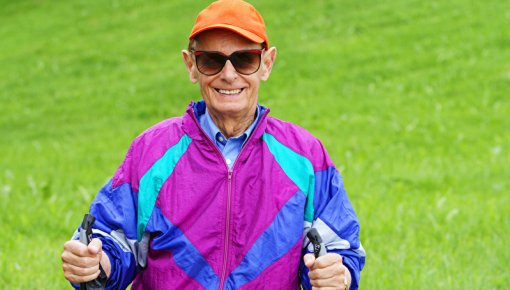Beauchamp MK, Evans R, Janaudis-Ferreira T et al. Systematic review of supervised exercise programs after pulmonary rehabilitation in individuals with COPD. Chest 2013; 144(4): 1124-1133.
Bundesärztekammer, Kassenärztliche Bundesvereinigung (KBV), Arbeitsgemeinschaft der Wissenschaftlichen Medizinischen Fachgesellschaften (AWMF). Nationale Versorgungsleitlinie COPD. AWMF-Registernr.: nvl-003. 2021.
Deutsche Gesellschaft für Pneumologie und Beatmungsmedizin (DGP), Deutsche Atemwegsliga, Österreichische Gesellschaft für Pneumologie (ÖGP). S2k-Leitlinie zur Diagnostik und Therapie von Patienten mit chronisch obstruktiver Bronchitis und Lungenemphysem (COPD). AWMF-Registernr.: 020-006. 2018.
Ding M, Zhang W, Li K et al. Effectiveness of t'ai chi and qigong on chronic obstructive pulmonary disease: a systematic review and meta-analysis. J Altern Complement Med 2014; 20(2): 79-86.
Ferreira IM, Brooks D, White J et al. Nutritional supplementation for stable chronic obstructive pulmonary disease. Cochrane Database Syst Rev 2012; (12): CD000998.
Gendron LM, Nyberg A, Saey D et al. Active mind-body movement therapies as an adjunct to or in comparison with pulmonary rehabilitation for people with chronic obstructive pulmonary disease. Cochrane Database Syst Rev 2018; (10): CD012290.
Global Initiative for Chronic Obstructive Lung Disease (GOLD). Global Strategy for the Diagnosis, Management, and Prevention of Chronic Obstructive Pulmonary Disease. 2022 Report. 2022.
Holland AE, Hill CJ, Jones AY et al. Breathing exercises for chronic obstructive pulmonary disease. Cochrane Database Syst Rev 2012; (10): CD008250.
Howcroft M, Walters EH, Wood-Baker R et al. Action plans with brief patient education for exacerbations in chronic obstructive pulmonary disease. Cochrane Database Syst Rev 2016; (12): CD005074.
Lenferink A, Brusse-Keizer M, van der Valk PD et al. Self-management interventions including action plans for exacerbations versus usual care in patients with chronic obstructive pulmonary disease. Cochrane Database Syst Rev 2017; (8): CD011682.
McCarthy B, Casey D, Devane D et al. Pulmonary rehabilitation for chronic obstructive pulmonary disease. Cochrane Database Syst Rev 2015; (2): CD003793.
McNamara RJ, McKeough ZJ, McKenzie DK et al. Water-based exercise training for chronic obstructive pulmonary disease. Cochrane Database Syst Rev 2013; (12): CD008290.
Ngai SP, Jones AY, Tam WW. Tai Chi for chronic obstructive pulmonary disease (COPD). Cochrane Database Syst Rev 2016; (6): CD009953.
Puhan MA, Gimeno-Santos E, Cates CJ et al. Pulmonary rehabilitation following exacerbations of chronic obstructive pulmonary disease. Cochrane Database Syst Rev 2016; (12): CD005305.
Raveling T, Vonk J, Struik FM et al. Chronic non-invasive ventilation for chronic obstructive pulmonary disease. Cochrane Database Syst Rev 2021; (8): CD002878.
Thomas MJ, Simpson J, Riley R et al. The impact of home-based physiotherapy interventions on breathlessness during activities of daily living in severe COPD: a systematic review. Physiotherapy 2010; 96(2): 108-119.
Van Eerd EA, van der Meer RM, van Schayck OC et al. Smoking cessation for people with chronic obstructive pulmonary disease. Cochrane Database Syst Rev 2016; (8): CD010744.
IQWiG health information is written with the aim of helping people understand the advantages and disadvantages of the main treatment options and health care services.
Because IQWiG is a German institute, some of the information provided here is specific to the German health care system. The suitability of any of the described options in an individual case can be determined by talking to a doctor. informedhealth.org can provide support for talks with doctors and other medical professionals, but cannot replace them. We do not offer individual consultations.
Our information is based on the results of good-quality studies. It is written by a team of health care professionals, scientists and editors, and reviewed by external experts. You can find a detailed description of how our health information is produced and updated in our methods.


